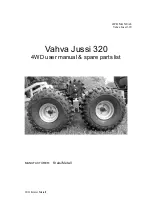
HYDAC FILTER SYSTEMS GMBH
Operation | 6
BeWa CTU1x5x 4603539 en-us web
65 / 120
6.4 Determining the negative control value -
Settings/parameters
the measurement technology analysis within a decay measure-
ment. This value represents the sum of all impurities not originat-
ing from the component and is therefore of significant importance.
If liquids are used for cleanliness testing by extraction, all the parti-
cles introduced during the test, aside from those from the compo-
nent, can be included in the test result in addition to the particles
originating from the component. The total value of the particles not
originating from the component is referred to as the negative con-
trol value. If this value is relatively high, it can lead to an incorrect
assessment of the technical cleanliness. During the analysis, it
must therefore be ensured that the negative control value does not
have a significant influence on the test result. For this purpose, the
negative control value must first be recorded in a suitable manner.
In addition, this value may only be in a special, maximum ratio to
the required technical cleanliness, which is not exceeded.
The achievable negative control value depends very much on the
ambient conditions of the extraction unit (e.g. clean room or fac-
tory floor) as well as the frequency of use.
Environmental requirement at
the location of the extraction unit
Achievable negative control
value
Clean room
0.1 … 0.2 mg
Laboratory
0.2 … 0.4 mg
Separate sampling room
0.2 … 0.6 mg
Factory hall
0.2 … 0.8 mg
Tab. 6:
Achievable negative control value
Depending on the required particle size, the effort for achieving the
negative control value is differently high.
Requisite effort Particle size
Cleaning time
[h] after shut-
down ≤ 24 h
Cleaning time
[h] after shut-
down > 24 h
Low
≤ 250 µm*
0.5 … 1.5
1 … 3
Medium
≤ 150 µm*
1 … 2
2 … 4
High
≤ 100 µm*
1.5 … 4
3 … 5
Tab. 7:
Effort to achieve the negative control value
1
2
3
4
5
6
7
8
9
A
















































